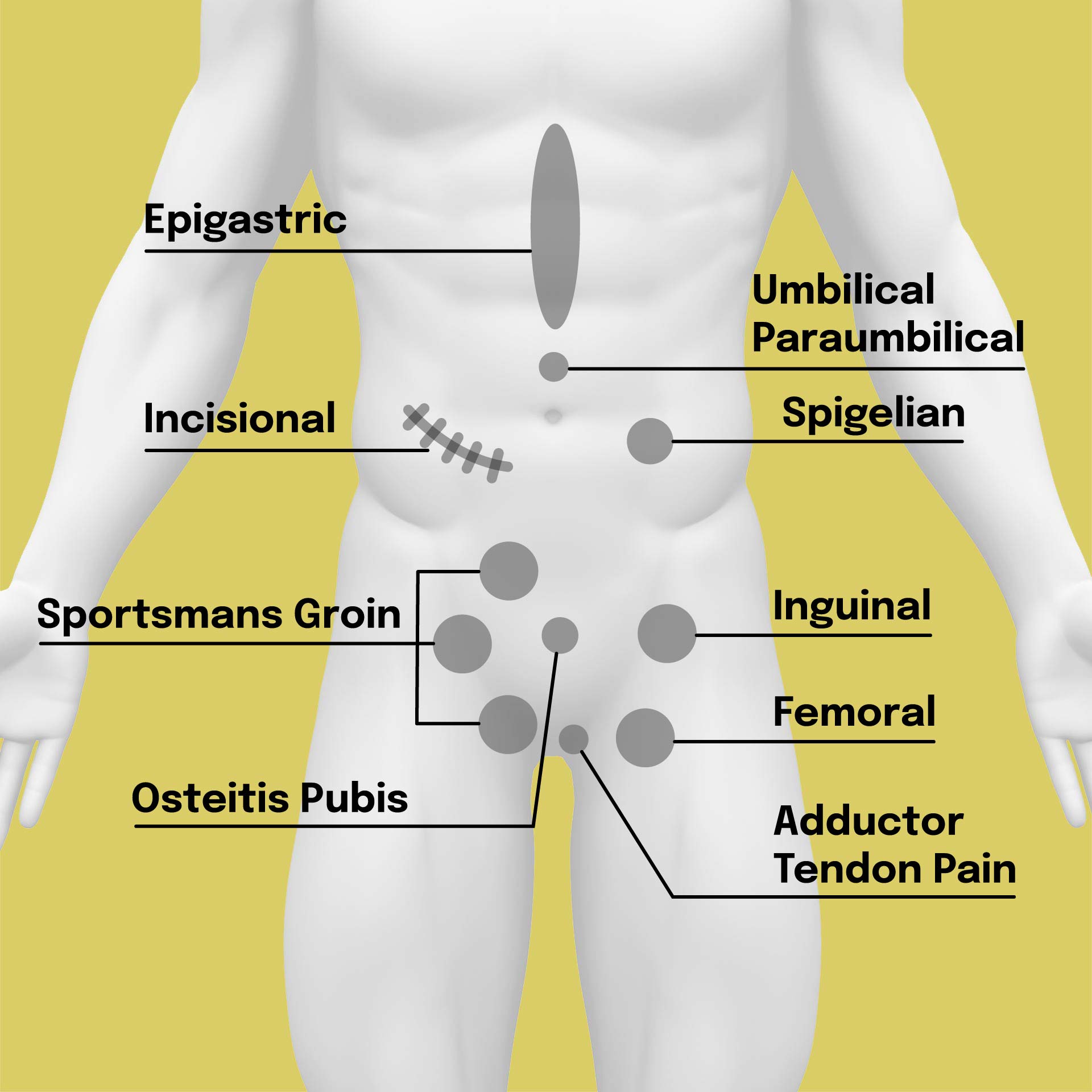Inguinal
An Inguinal Hernia is one of the commonest hernias seen. It is the protrusion of the abdominal contents through the inguinal canal of the abdominal wall. There are two types of inguinal hernia, direct and indirect. Direct hernias protrude directly through the medial inguinal canal, medial to the inferior epigastric artery and indirect inguinal hernias extend along the inguinal canal, originating laterally to the inguinal ligament.
Inguinal hernias are seen more commonly in men than in women.
They may be caused by excessive lifting, coughing and straining. Occasionally there are no predisposing factors evident.
Symptoms and Signs
They usually present with a lump in the groin which is more prominent on standing or straining, coughing lifting or straining. The lump often disappears on lying flat. Less commonly they present with pain and discomfort.
Diagnosis
The diagnosis is most commonly made clinically. When there is doubt ultrasound, CT and MRI may be helpful.
Treatment
Once present a hernia does not repair itself. Over time it can increase in size. There is also a risk of the hernia becoming strangulated, (twisted). For this reason, your surgeon would usually recommend surgical repair.

